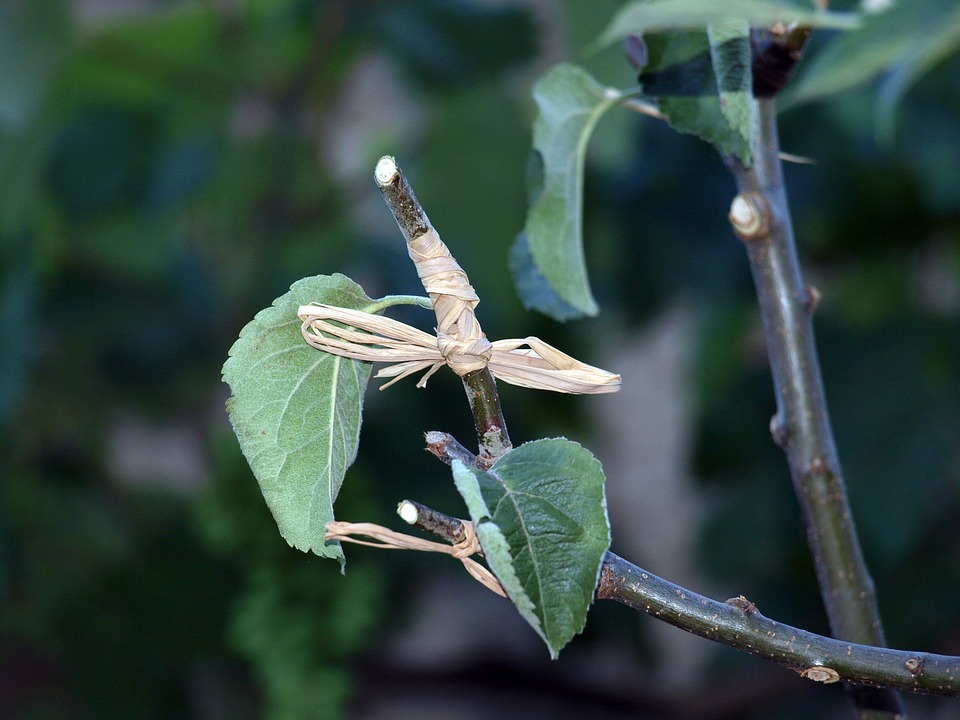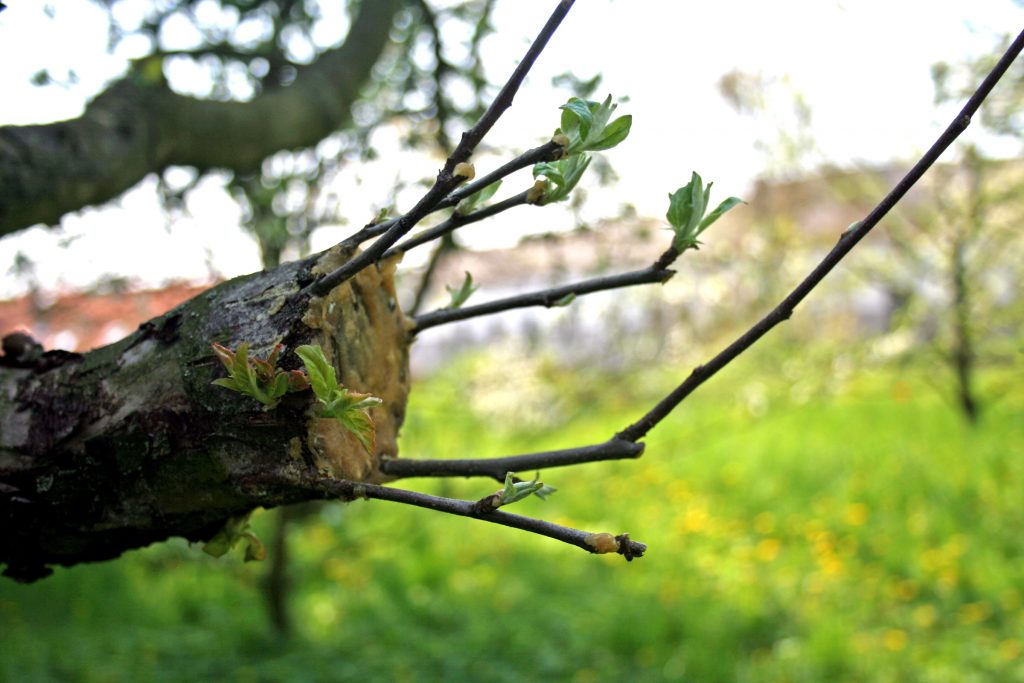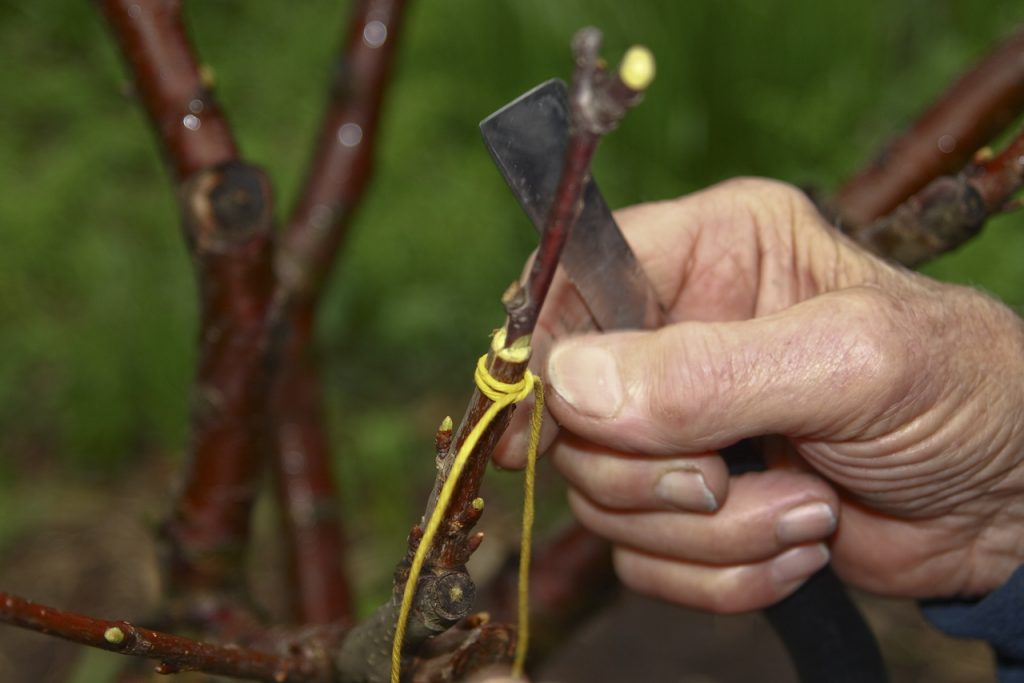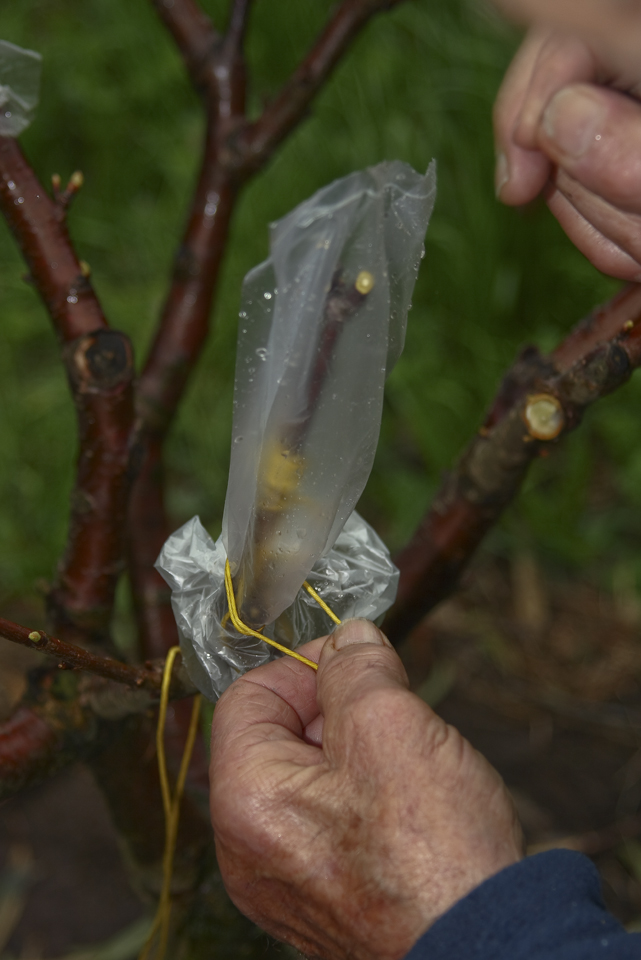Summary
In this post, we will go through the following:
1. What is fruit tree grafting?
2. Why graft a fruit tree?
3. How to graft a fruit tree?
4. What types of grafts?

Grafting is a kind of ‘surgical’ operation that consists of multiplying fruit trees. Consider establishing an orchard plan before planting your fruit trees. You will need to draw a map to sketch out your plans so when planting day comes, you will know where exactly you are going to plant each tree. Planning and designing an orchard is important because once your trees are in the ground, they may be there for another century, so careful planning is needed!
1. What is fruit tree grafting?
It is essential to carry out grafting to preserve all the genetic characteristics of a fruit tree, which makes it possible to multiply the fruit trees.
This operation is, therefore, to reproduce the different plants by uniting two species.
We will, therefore, perform a kind of ‘weld’ so that the species will become one.
For this graft to be successful, it is vital to ensure the contact of the cambiums of the two plants are united.
Therefore, the area in which the elaborated sap circulates (lib) must be made to match through a vascular connection and the graft will be able to feed.
A small branch of a plant is inserted, and from that, the branch will develop into a plant. This process is called the graft or escutcheon. And, the rooting plant that has roots is called the rootstock.
Grafting is usually used when growing from cuttings alone is impossible. A few examples of growing plants from cuttings are mint, sage, rosemary, thyme, basil, lavender, oregano, among others.
2. Why graft a fruit tree?

Grafting a fruit tree is useful and brings several benefits, namely by:
– multiplying a fruit tree that is difficult to replicate by other methods (cuttings, layering);
– having a vigorous tree by opting for a suitable rootstock that will help to yield great fruits;
– adapting a fruit tree to a soil that does not suit its species: by grafting, for example, a pear tree on a hawthorn to obtain a plant that will adapt in chalky earth;
– reaping early harvests and improving the quality of the fruit;
– providing resistance to various diseases or insects;
– obtaining better pollination of a variety of tree by grafting on the same tree a male and a female.
3. How to graft a fruit tree?
To graft a fruit tree, it is important to choose the proper period to obtain satisfactory results.
The grafting will, therefore, be carried out according to the fruit tree to graft, knowing that each species corresponds to one or more procedures (a type of transplant).
Spring grafting

First, you have to select the right plug-in. It will be chosen on a healthy, robust, productive tree, free of fruit tree diseases.
For a graft performed in summer, the tissues must not, under any circumstances, dry out:
The bark should peel off easily; you will need to take the branches of two grafts which have three eyes formed, and you will cut the base with a cutter;
then, split the rootstock and insert the graft until the barks match each other;
maintain the assembly with grafting filler (sold at your local hardware store).
Once the transplant is successful, you will separate them by cutting the connective tissue. The following year, in February or March, you will cut the trunk of the rootstock obliquely, about 7 cm above the graft point.
4. What types of grafts?
The two most common types of plant grafts are:
Whip and Tongue Graft
Whip and Tongue grafts deciduous trees, but works on woody plants also. The rootstock and scion are cut less than one-inch diameter. Each piece is cut at a 45-degree angle and a second vertical cut is made in each piece to create notches. The scion fits against the rootstock with the notches interlocking each other. The graft is then attached with grafting tape that holds the pieces together while they grow.
Cleft Graft
This technique attaches a less hardy scion variety to a hardy rootstock to change the properties of the plant. Cleft grafts are performed on fruit trees throughout winter when the trees are dormant. Proper scions should contain two to three buds and have a diameter of one-quarter inch. Rootstocks should be straight with a one to four-inch diameter. Preparation of the rootstock includes a horizontal topping cut and a two to three-inch deep vertical cut down its center. The scion, sporting 2 angular cuts on either facet of its end, fits within the vertical cut on the rootstock with the exposed wood touching the interior walls of the rootstock. Applying some wax paint over the rootstock’s prime seals the cuts and stabilizes the graft.
You can also experience with veneer graft which is also known as bark graft.
Hope the above helps you out with your grafting project. For more information and tips, jot down your comments in the section below.



